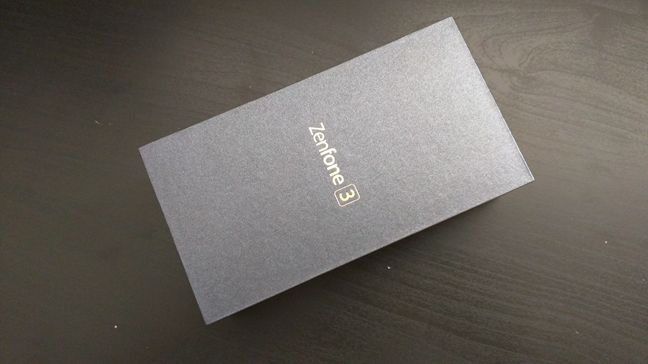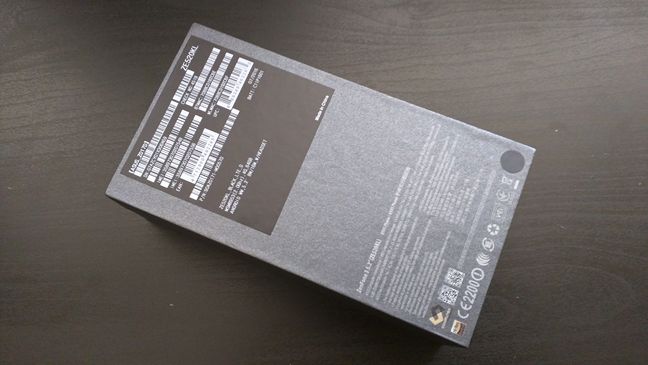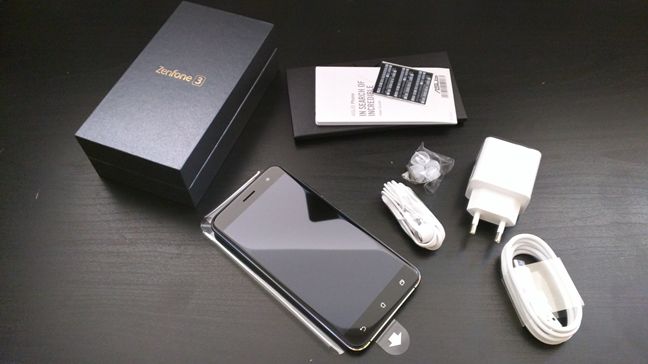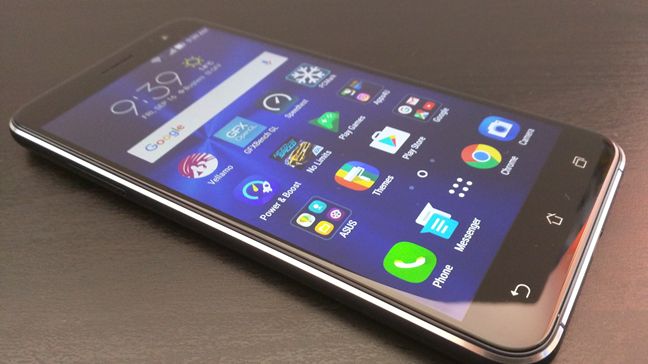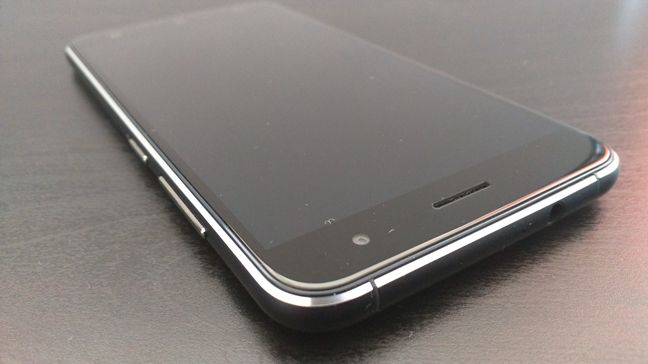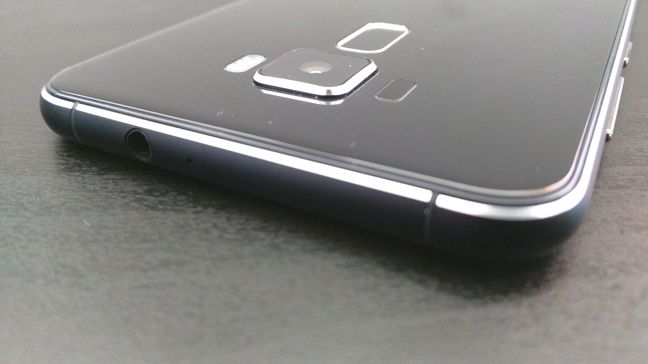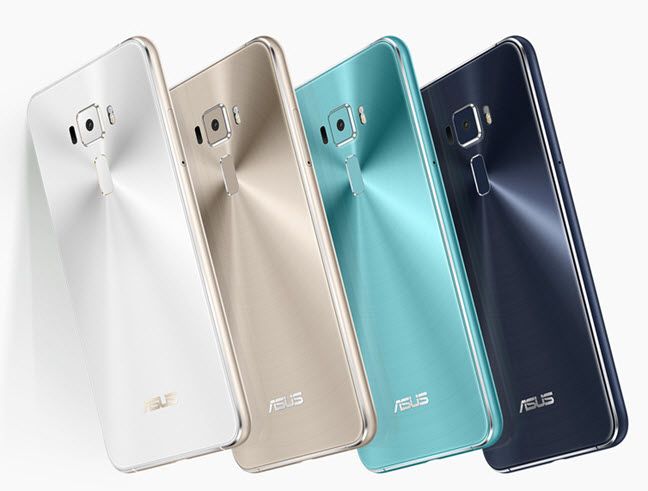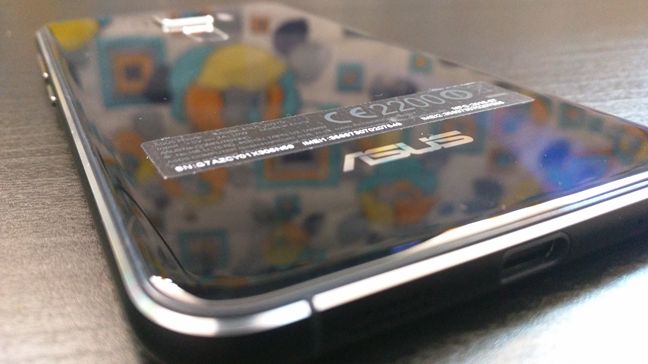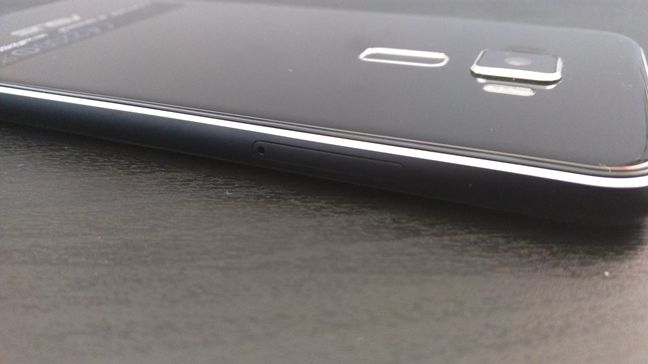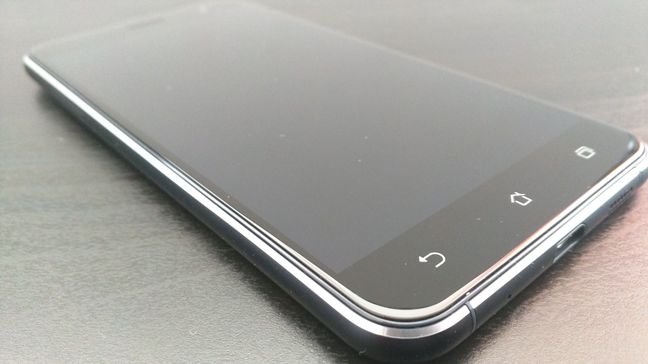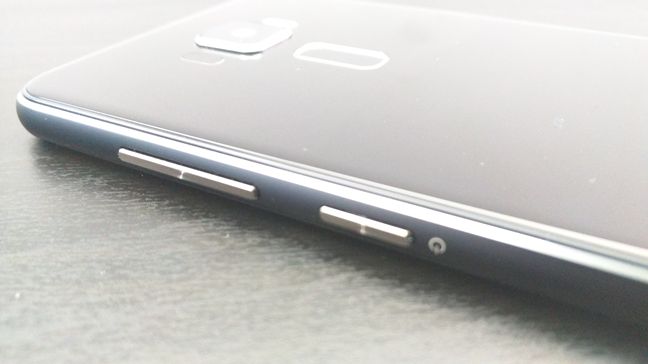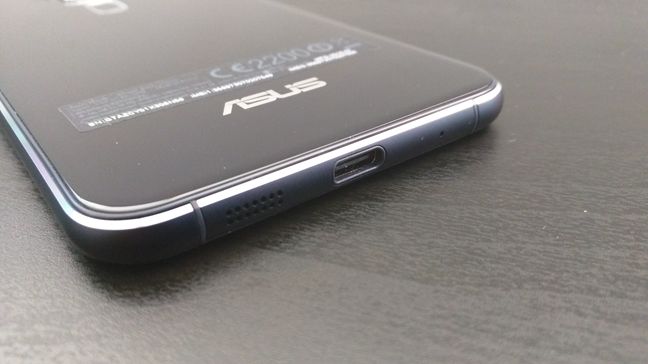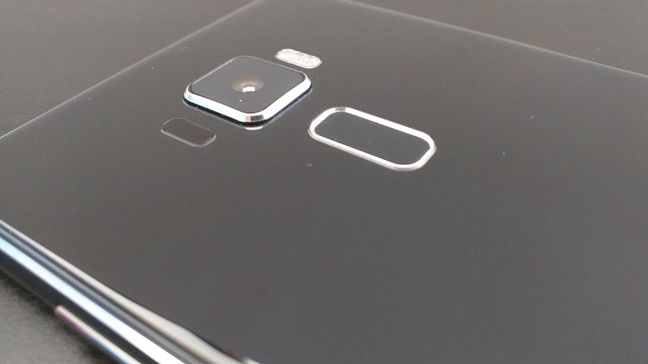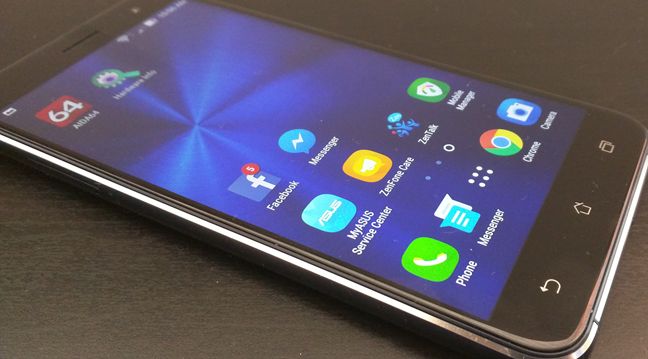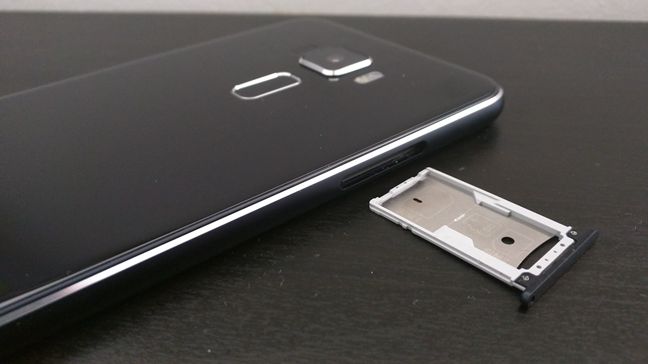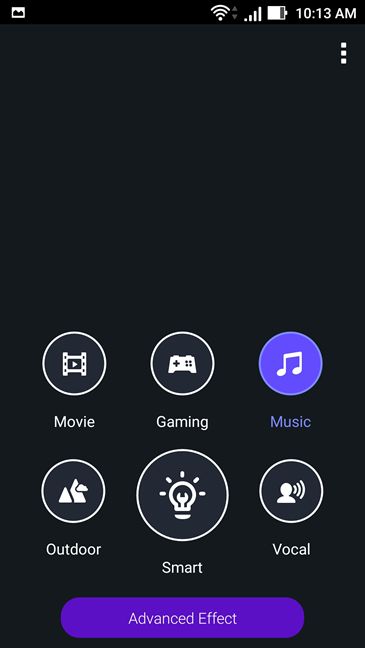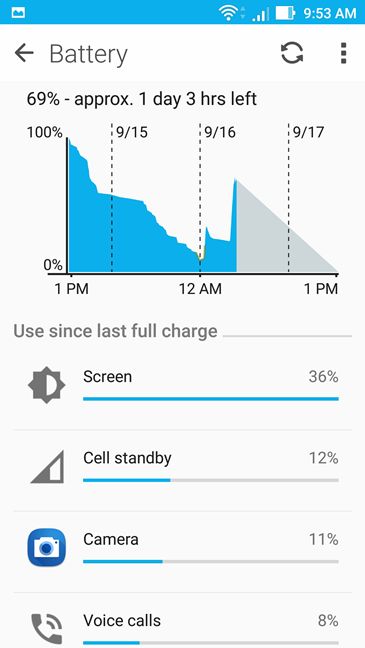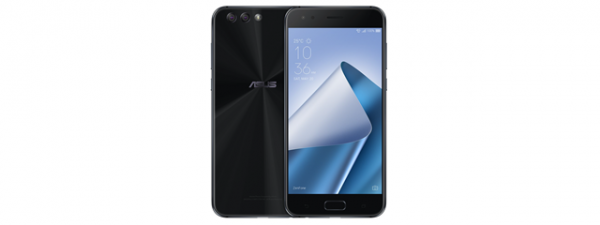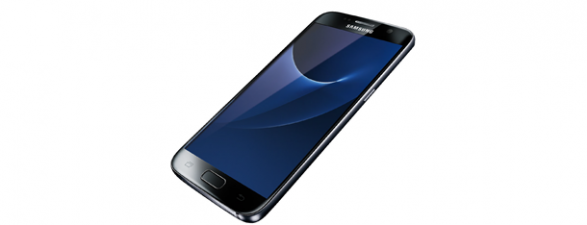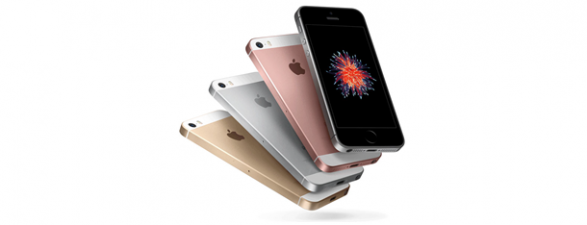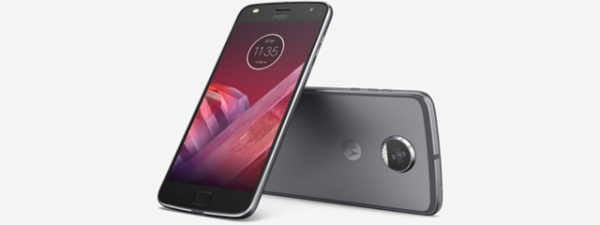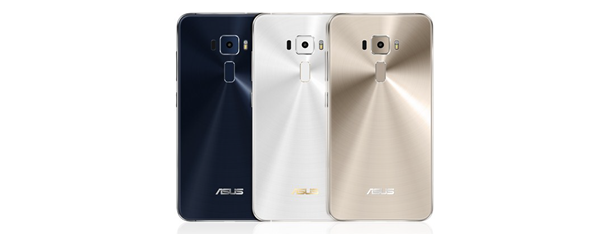
The fall season is here and ASUS is ready with a new series of ZenFone smartphones. The company is launching three different models, all in the same generation: the ASUS ZenFone 3, the ASUS ZenFone 3 Deluxe and the ASUS ZenFone 3 Ultra. All of them have solid hardware characteristics and each smartphone covers a different price segment. A few weeks ago, we got our hands on the ASUS ZenFone 3 (ZE520KL), which is the good looking little brother of the new family: it's a 5.2 inch smartphone with a lot to say and even more to show off. After testing it thoroughly and using it on a daily basis, in this review, we'd like to tell you how it works, what we liked about it and what its weaknesses are:
Hardware specifications and packaging
The ASUS ZenFone 3 ZE520KL smartphone comes in a black cardboard box that looks and feels premium. The design ASUS used for the packaging is very simple and minimalistic, yet also elegant. The top side of the box holds just the Zenfone 3 name in the center.
The Taiwanese company's name couldn't be missing either - it's embossed subtly on a side of the box. The bottom is the place where you get detailed information about the contents. There you'll find a sticker with the name of the smartphone you just bought, as well as some technical details about its hardware and software specifications.
The package opens similarly to a watch box and it holds the ASUS ZenFone 3 ZE520KL smartphone, its power charger and a removable USB to USB Type C cable, a pair of headphones and a set of earbuds with various sizes, a metal pin for ejecting the SIM tray out of the smartphone, the warranty card, a quick start guide and some other documentation.
Our first impression when we opened the package and looked at the ASUS ZenFone 3 ZE520KL was that we were holding a premium device in our hands. As we'll soon see, this smartphone is a strong challenger of the top mid range smartphones on the market.
Due to its 5.2 inch screen, the ASUS ZenFone 3 ZE520KL is a smartphone with a medium size, that will fit your hands regardless if you have large or small hands. The display used for this smartphone is a Super IPS+ capacitive touchscreen with a FullHD (1080 x 1920 pixels) resolution and a 424 ppi pixel density. The IPS part of these specifications means that the screen should offer natural colors, a good contrast ratio and some very good brightness levels.
It's also worth noting that both the display and the back of the smartphone are protected by Corning Gorilla Glass 2.5D. What that means is that the smartphone's screen and back are protected by a reinforced glass sheet that's curved to the edges. There are two benefits to this choice: the smartphone looks better from an aesthetics point of view, and the edges are more ergonomic. When you hold and use the smartphone, your fingers will meet only smooth surfaces all around the edges.
Enter the insides of the ASUS ZenFone 3 ZE520KL and you'll find that it runs on a 64-bit octa-core 2.0GHz Cortex-A53 processor and a Qualcomm MSM8953 Snapdragon 625 chipset. That processing power is also aided by an Adreno 506 graphics chip. In terms of memory, the ASUS ZenFone 3 ZE520KL can come with 3 or 4GB of LPDDR3 RAM memory, and with 32 or 64GB of built-in storage space, depending on the model that you buy. We tested the model with 4GB of RAM memory and 64GB of internal storage space. Besides what you get from the start, if you want to increase your smartphone's storage capacity, you should know that you can also add a MicroSD card of up to 2TB.
It looks like ASUS understood the importance of the camera on a smartphone better than many other manufacturers, and on the ASUS ZenFone 3 ZE520KL, they did a really good job in this area. The smartphone uses a main rear camera with a 16 megapixels sensor, a f/2.0 aperture and 6P Largan lens. The camera also benefits from a 0.03 second laser auto-focus, a 4-axis Optical Image Stabilization system and a Dual-LED real tone flash. On the front of the smartphone, ASUS included a 8 megapixel camera with an f/2.0 aperture that should be the delight of all selfie lovers. 🙂
Talking about the connectivity options , it's important to note that the ASUS ZenFone 3 ZE520KL is a dual SIM smartphone , meaning that it can work with two SIM cards at the same time. It can connect to 4G mobile networks (although only one SIM can use 4G at a time), and it also has a built-in Bluetooth 4.2 chip for close range wireless connections. In terms of wireless connectivity, it works with a network chip that's compatible with the 802.11 a/b/g/n/ac networking standards, so it can connect to both 2.4GHz and to 5GHz wireless networks.
The ASUS ZenFone 3 ZE520KL also comes with a variety of sensors installed. Beside the common sensors like the accelerometer, gyroscope, proximity or ambient light sensor, ASUS also included a fingerprint scanner on the back of the device, which you can use to unlock the smartphone or authenticate in various apps.
The autonomy of this smartphone is offered by a non-removable 2650mAh battery that, together with the new generation chipset should give more than a day's worth of battery life on a charge.
If size and weight are things you care about, you should know that it weighs 5.08 ounces (144 grams) in a body with 5.78 inches ( 146.87mm) in length, 2.91 inches (73.98mm) in width and 0.30 inches (7.69mm) in thickness.
If you'd like to see more details about the specifications of the ASUS ZenFone 3 ZE520KL, check its official website: ASUS ZenFone 3 ZE520KL.
In terms of hardware power, the ASUS ZenFone 3 ZE520KL has everything you'd expect and a bit more from a top mid range smartphone.
Design and build quality
We will start this section by saying that the ASUS ZenFone 3 ZE520KL is one of the best looking Android smartphones we've had the chance to test this summer. It may be a midrange smartphone, with a price tag that's not sky high, but that doesn't mean that ASUS made compromises when it comes to the design and the materials used in building the ASUS ZenFone 3 ZE520KL.
The smartphone is available in four color variations: Sapphire Black, Moonlight White, Aqua Blue and Shimmer Gold , which you can see in the picture below. The one we've tested is a Sapphire Black model which, at least in our opinion, looks great.
As we also briefly mentioned in the hardware specs section of this review, both the screen and the back of the smartphone are covered in glass. Using this material has both a good part and a bad one. The ASUS ZenFone 3 ZE520KL looks stylish and will fit nicely with any elegant attire. But all that glass, on every side, also means that the smartphone is a fingerprint magnet and there's not much you can do about it. Unless, of course, you're going to clean it all the time, and that could lead to an OCD disorder you don't want to have. 🙂
Sure, you could also get yourself a nice protective case and put your smartphone inside, but why do that with such a gorgeous smartphone? It would be a shame to hide it just like that. And, from our own experience, we can tell you that cases usually interfere with how the flashlight works and it's also probably going to be harder to reach the fingerprint sensor on the back of the phone. All that glass on the smartphone meets on the curved edges made from matte plastic and strengthened but also stylized by two very thin lines of brushed metal.
The front of the smartphone is dominated by the 5.2 inch display, but it's also home to the front camera and the ear speaker at the top, and the three Android buttons on the bottom. Speaking of which, ASUS chose to use touch capacitive buttons for all three Android default actions: Back, Home and Recent apps. We always said that this type of "physical" buttons is our preferred choice on any smartphone. We like them better than the software buttons embedded on the display of some smartphones simply because they don't feel like they're taking our screen's space. We wished however that they would have also been illuminated, as they would have been slightly easier to find in the dark.
The other three buttons - the power button and the volume rocker - are all found on the top right edge of the ASUS ZenFone 3. They have a rather strong, but very pleasant, tactile feedback and they're also very easy to differentiate because of their brushed surfaces and sharp edges.
The opposite edge - the left one - is clear of any buttons or jacks, but it is home to the SIM tray. To open it, you will have to use the metal pin from the package or any small pin.
The top edge of the ASUS ZenFone 3 is the place where you'll find the 3.5mm audio jack and the secondary microphone, while on the bottom edge you'll find the USB Type C port, the loudspeaker grille and the primary microphone.
Finally, the back of the smartphone is dominated by the camera and the fingerprint sensor. The ASUS ZenFone 3 ZE520KL offers a good camera that we found to perform better than those on many other smartphones in this price category. But, because ASUS used a good camera sensor, as well as a good set of lenses, and because they managed to build a pretty thin smartphone, the downside is that the camera is "a bump" on the back of the ASUS ZenFone 3. It doesn't bother us, in fact we like smartphones with protruding cameras, because they feel like being a bit more photography oriented. Which is actually true about the ASUS ZenFone 3 ZE520KL, but we'll talk more about that in the camera section of this review.
As far as the fingerprint sensor goes, it's a pretty good one. After setting it up, unlocking the smartphone was as easy as taking it in my hand. The sensor is positioned in the perfect place for my index finger to press, so it's almost a natural movement to unlock the smartphone. However, the fingerprint sensor manages to identify your fingerprint about 4 times out of 5. One time out of five, it may fail. That's an efficiency rate that's quite good in our opinion.
Overall, the ASUS ZenFone 3 ZE520KL looks a whole lot better than you'd expect from a mid range smartphone and the materials used by the Taiwanese company feel like premium quality.
The smartphone experience on the ASUS ZenFone 3 ZE520KL
One of the key elements of a good smartphone usage experience is the quality of the screen you get. Fortunately, ASUS did a great job in this area - they say that the ASUS ZenFone 3 ZE520KL has a 75.6% screen-to-body ratio and a display capable of offering a 600 nits maximum brightness. We can't argue, as the 5.2 inch Full HD display looks good even in bright light conditions, including when using it in direct sunlight. Plus, the viewing angles are very good, the colors are rich and vibrant and the text looks really crisp. There's nothing bad we can say about it, as it is a very good display. 🙂
Then, the next big thing in what makes a smartphone offer a good user experience is the way it works. By that we're thinking at how fast the smartphone responds to your commands. The ASUS ZenFone 3 ZE520KL performs very well in this area: we never felt it to be laggy and we have never seen it block or restart itself. It downloads and installs apps quite fast (especially on a fast 5GHz Wi-Fi network), and the apps and games we ran all worked very well.
Earlier, in the hardware specs section of this review, we mentioned that the ASUS ZenFone 3 ZE520KL is a dual SIM smartphone. That means that you can simultaneously use two SIM cards. Although both SIM card slots support 3G WCDMA and 4G LTE network bands, only one of them can connect to a 3G or 4G network at a time. The other SIM will only work on a 2G network in such a case. It's also worth mentioning that, if you will be using the ASUS ZenFone 3 ZE620KL as a dual SIM smartphone, one of the SIM cards has to be a micro SIM card, while the other has to be a nano SIM card.
Secondly, if you will want to add a microSD card to your smartphone in order to increase its storage capacity, that microSD card must be inserted in the nano SIM slot, so in this case, you won't be able to use the smartphone in Dual SIM mode.
For as long as we had it in tests, we can say that the ASUS ZenFone 3 ZE520KL worked admirably from a "phone" user viewpoint. We never had problems with the signal reception, and the phone conversations we had were of very good quality. Both you and the person to whom you're speaking will easily understand each other. Another aspect that we appreciated in the ASUS ZenFone 3 ZE520KL is that, although we kept the "in calls" sound volume at the maximum level, people around us couldn't understand what the person on the other side was saying. That means that the earpiece does a good job, and it also means that your private conversations remain private. 🙂
As far as the audio quality goes when playing media files, the loudspeaker on the ASUS ZenFone 3 ZE520KL is pretty good and ASUS even brags about the "5 magnet speaker" they used on it. However, although it's not distorting sounds and the audio quality is more than decent, we can't say that it impressed us in any meaningful way. If you want very good quality, a good set of headphones will offer you a much better result.
In terms of autonomy, the 2650mAh non-removable battery managed to last us for about a day on a full charge. That includes activities every regular smartphone user performs: phone calls and text messages, browsing the web, reading and answering emails, scrolling through Facebook, looking at funny cats on YouTube and playing casual games from time to time. It's not an impressive battery life, but it falls well within the norms of mid-range smartphones.
The ASUS ZenFone 3 ZE520KL is a very good smartphone: the display looks great and the hardware has no issues in offering enough power for any activity. We also appreciated the very good quality of the phone calls we had on it.
Read the next page of this review to learn more about the camera experience on this smartphone, the software installed on it and about the performance it offers in benchmarks.


 05.10.2016
05.10.2016 